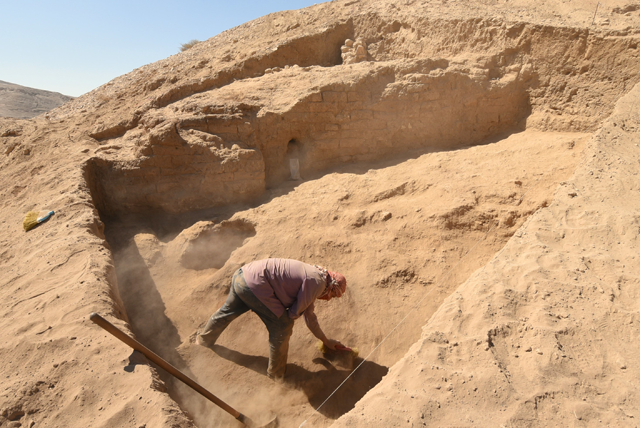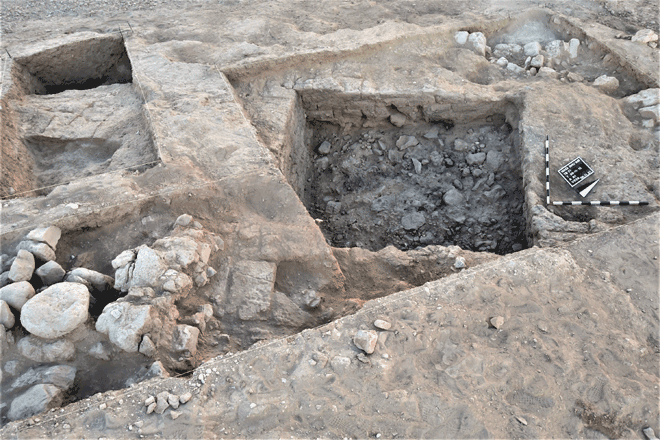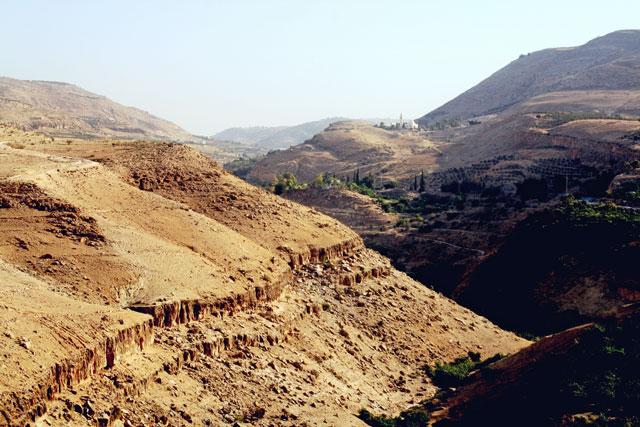You are here
Ancient Ammonite Kingdom : Unearthing Iron Age treasures of Tell Bleibil
By Saeb Rawashdeh - Feb 25,2024 - Last updated at Feb 25,2024

Excavations of the Iron Age fortification walls at Tell Bleibil (Photo courtesy of Alexander Ahrens)
AMMAN — Tell Bleibil is a site located in the southern Jordan Valley, where a team of German archaeologists has been excavating for years. In 2021, the German Archaeological Institute from Berlin resumed its research and during the field seasons 2022 and 2023, their excavation focused more on the fortification wall system at the site.
The excavated structures were dated from the Iron Age, and the head of the German team, Alexander Ahrens, said that they unearthed “one room inside the casemate walls down to the Iron Age floor level”.
“Radiocarbon analysis tells us that the fortress was constructed around 830 BC, and then destroyed 250 years later, in the early 6th century BC, probably, but not yet proven, by a military attack of the Neo-Babylonians.”
“All the excavated trenches reveal evidence of a massive conflagration and leads us to believe that the site was completely destroyed at that time,” Ahrens explained, adding that his team excavated trenches inside the fortress for the first time, revealing houses dating back to the 5th — 4th century BC, i.e. after the destruction, but also earlier levels, contemporary to the period of the demolition.
It seems that there was a hiatus of occupation after the destruction of the site, but people came back to resettle the ruins and later restore the destroyed structures.
The fortification walls enclose a relatively big space that measures ca. 120 x 65 metres, and Tell Bleibil was a part of network of the Iron Age site in the East Bank.
“We believe this is a border fortress of the Ammonites, guarding the territory of their kingdome to the west. Most probably, a chain of way stations/fortresses connected the site with the Ammonite heartland, but it is unclear where these existed,” Ahrens said, that the site apparently was abandoned during the 4th or 3rd century BC because the team did not discover the Roman pottery.
The north-western part of Jordan was a territory of Ammonite Kingdome and the capital Amman owns its name to ancient Ammonites.
The Iron Age (1200 BC — 539 BC) saw the development and consolidation of three new kingdoms in Jordan: Edom in the south, Moab in central Jordan and Ammon in the northern mountain massive. This period witnessed a shift in the level of power from the “city-states” to larger kingdoms and one of the reasons for the development of bigger state formation was the significance of the trade route connecting the Arabian Peninsula, which carried gold, spices, incense and precious metals through Amman and Damascus, up to northern Syria.
Related Articles
AMMAN — After a pandemic-induced break in active field work in 2020, archaeological work in Jordan’s Wadi Shuaib resumed in 2021, said Alexa
AMMAN — The results of the Wadi Shu’aib Archaeological Survey Project (WSAS) were presented on Sunday, during a lecture by project director
AMMAN — The Jordan Valley and the Transjordanian Highlands are two distinctive regions, however material culture found in the two areas poin


















